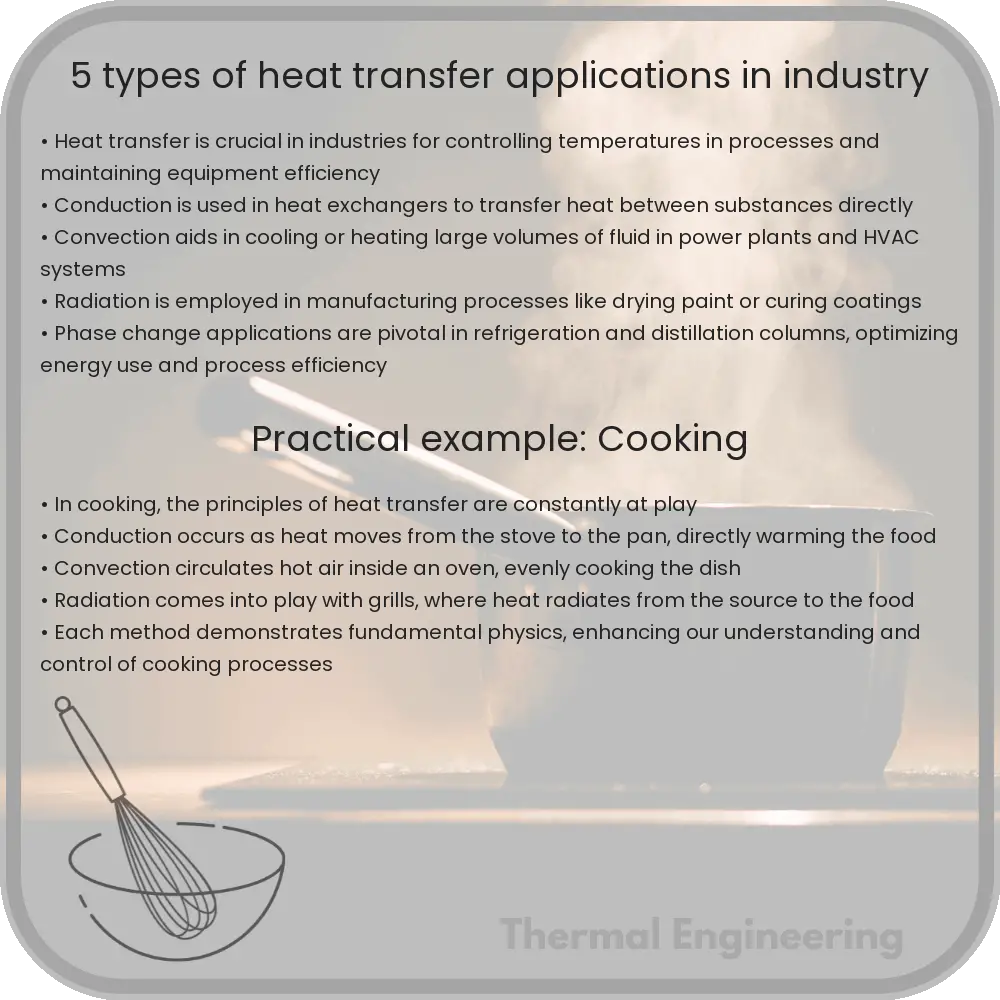Learn how heat transfer is essential in various industrial processes, enhancing efficiency and safety across sectors.

Understanding Heat Transfer in Industrial Applications
Heat transfer is a fundamental concept in physics and engineering that describes the movement of heat energy from one place to another. It plays a crucial role in various industrial processes where heating or cooling is necessary. Understanding how heat transfer works and its practical applications can enhance efficiency and safety in industrial operations. Here are five types of heat transfer applications commonly seen in industries.
1. Cooling Systems in Power Plants
Power plants, especially those using nuclear or thermal energy sources, rely heavily on cooling systems to maintain optimal operating temperatures and ensure safety. Heat exchangers are pivotal in transferring heat away from the reactor core or steam generators to a cooling medium (often water), which is then cooled in large cooling towers. This process involves both convection (transfer of heat through a fluid moving due to a temperature difference) and conduction (heat movement through direct contact between materials).
2. Heat Exchangers in Chemical Processing
Chemical industries use heat exchangers extensively to control the temperatures of reactions or to recover heat from exhaust gases for energy efficiency. Types of heat exchangers like shell and tube, plate, or air cooled are utilized depending on the process requirements. These setups allow transfer of heat between two fluids without them coming into direct contact, predominantly through convection and conduction mechanisms.
3. Refrigeration and Air Conditioning
Refrigeration and air conditioning are prime examples of heat transfer applications using evaporation and condensation processes. These systems absorb heat through the evaporation of a refrigerant at low pressure and release it by condensing the refrigerant at high pressure in another location. This cycle is essential in various industries for product storage (like food and pharmaceuticals) and providing comfortable indoor environments in commercial buildings and residential areas.
4. Food Industry Applications
Heat transfer is vital in the food industry for processes such as pasteurization, baking, frying, and freezing. Efficient transfer of heat helps in ensuring food safety, enhancing taste, and prolonging shelf life. Different heat transfer methods including conduction (e.g., grilling), convection (e.g., baking), and radiation (e.g., broiling) are strategically used to achieve desired food qualities.
5. Thermal Power Generation
In thermal power stations, heat from combustion or other sources is used to heat water in boilers, creating steam that drives turbines connected to electric generators. The concept of radiation (transfer of energy by electromagnetic waves) comes into play along with convection and conduction, as the heat source (often burning coal, gas, or oil) emits energy that converts water into steam, subsequently used to generate power.
Each of these applications showcases the principles of heat transfer in action, highlighting their importance across different sectors. By efficiently managing heat transfer, industries can improve safety, enhance performance, and reduce operational costs, making it a vital area of study in both physics and engineering.